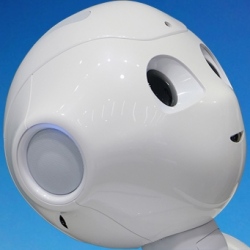
A new visual problem-solving computational model that performs in the 75th percentile for American adults on a standard intelligence test. The research is an important step toward making AI systems that see and understand the world as humans do, says Northwestern Engineering’s Ken Forbus.
The research was published online in January 2017 in the journal Psychological Review. The new computational model** is built on CogSketch, an AI platform previously developed in Forbus’ laboratory. It can solve visual problems and understand sketches to give immediate, interactive feedback. CogSketch also incorporates a computational model of analogy, based on Northwestern psychology professor Dedre Gentner’s structure-mapping engine.
The ability to solve complex visual problems is one of the hallmarks of human intelligence. Developing artificial intelligence systems that have this ability provides new evidence for the importance of symbolic representations and analogy in visual reasoning, and it could potentially shrink the gap between computer and human cognition, the researchers suggest.
A nonverbal fluid-intelligence test
The researchers tested the AI system on Raven’s Progressive Matrices, a nonverbal standardized test that measures abstract reasoning. All of the test’s problems consist of a matrix with one image missing. The test taker is given six to eight choices for completing the matrix.
“The problems that are hard for people are also hard for the model, providing additional evidence that its operation is capturing some important properties of human cognition,” said Forbus.
“The Raven’s test is the best existing predictor of what psychologists call ‘fluid intelligence,’ or the general ability to think abstractly, reason, identify patterns, solve problems, and discern relationships,” said co-author Andrew Lovett, now a researcher at the U.S. Naval Research Laboratory. “Our results suggest that the ability to flexibly use relational representations, comparing and reinterpreting them, is important for fluid intelligence.”
“Most artificial intelligence research today concerning vision focuses on recognition, or labeling what is in a scene rather than reasoning about it,” Forbus said. “But recognition is only useful if it supports subsequent reasoning. Our research provides an important step toward understanding visual reasoning more broadly.”
